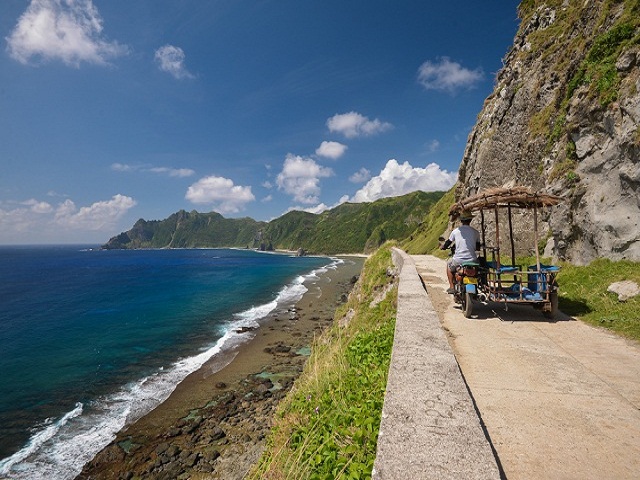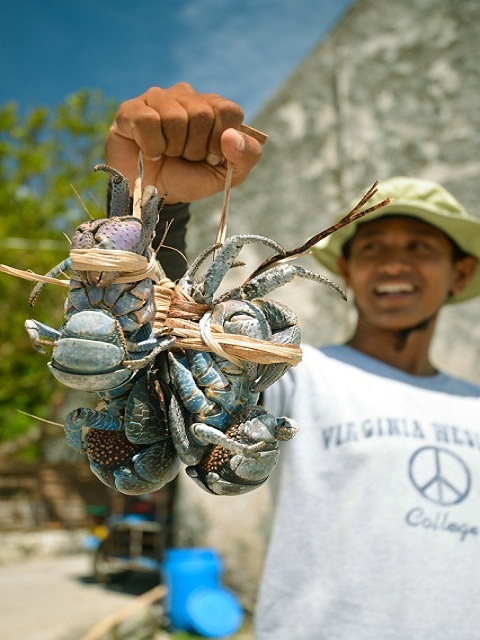Filtered by: Lifestyle
Lifestyle
A day on Sabtang Island in Batanes
By NIKKA CORSINO

Well preserved stone houses along Chavayan, a UNESCO World Heritage Site. All photos by Owen Ballesteros
It was a bright, sunny day, but even then, I regarded the 30-minute boat ride a feat in itself: it meant crossing the usually treacherous waters of the Balintang Channel, where the Pacific meets the West Philippine Sea.
The Ivatans' answer to this is the faluwa—a boat that's wider than usual and not fitted with an outrigger, so it rides the waves instead of battling the sea. It looked like a small Noah's Ark, painted red, blue and white, carrying everything from people to sacks of goods to motorcycles (and, at certain times, even vehicles).
Sabtang and its cogon-roofed tricycles
Sabtang Island is the smallest of the three inhabited islands of Batanes province. Apart from that, and the testy boat ride it takes to get there, I knew nothing else of it. Except for another thing: there was a fiesta happening that day.
True enough, the town square just across the port looked every bit festive: streamers hung from buildings and produced rows of fluttering shadows on the concrete below. Local folk wove in and out of the whitewashed church, easily the most prominent structure around. The old women wore dresses, the men barong tagalog. I could not help but notice the grass in front of the church that was a rich blanket of green, the kind everyone back in the mainland will pay good money to maintain.
Sabtang looked more rural than the main Batan Island—its structures more humble, its streets narrower. And even during a festival, there seemed to be fewer people at the town square than there were along Basco's streets.
Then came the tricycle that was to ferry us around, only it looked like no other tricycle I've seen before. It had a cogon roof supported by four bamboo poles, each standing on the sides of an iron base. It had two planks on either side and no other enclosure, so that air was free to circulate and passengers could see all around. It was driven by Randy, who would be our day's guide and host of sorts.
"Makiki-pyesta tayo mamaya" was his welcome. Every home in the centro prepared for the fiesta, and of course, we were invited, he said.
But first, we had two other towns on the island to see onboard his cogon-roofed ride.
Chavayan, Savidug, and cliffside roads in between

Mountainside roads between Sabtang's centro and the southern towns.
What I did not expect was the bumpy ride along roads that were partly concrete, and teetering on slopes as well. Once, we made a turn along a cliffside road and saw a vast valley at our feet. Its steep slopes gave way to a stony beach and the waters of the Balintang Channel beyond. The roads ahead clung to mountains that were as steep as they were tall.
We trod along the wake of Typhoon Odette, which many locals said was the strongest they had experienced in more than two decades. Rows of trees were uprooted, some leafless, others violently bent. Up on the hills, brown earth interrupted what was once a blanket of green.
That said, I would not have taken notice if Randy didn't point it out. He, along with many other Ivatans I have met throughout the trip, shared the same sentiment: Batanes looked way more beautiful before Odette came. They all sounded apologetic, even, that we arrived to a less-than-ideal landscape.
It was quite difficult to have to take the same tack though, since everything I saw was simply stunning.
We passed by a lake where carabaos bathed and migratory birds roosted. High in the mountains, barely visible from the thick overgrowth, was an idjang—a stone fortress where Ivatans used to take shelter during tribal wars.
The village of Savidug looked lonely, but it was probably because of the recent storm.
A small marker, its paint chipped, welcomed us to Chavayan, a village with a network of narrow alleyways and the most stone houses I have yet seen in a single area.
Nothing embodies the Ivatans' resilience better than their stone houses, with cogon roofs as thick as their solid-stone walls. Each house has very small windows, most likely to lessen the impact of winds and rain. Impregnable though they looked, it was quite interesting to note that their windows and doors were painted in solid, happy colors. So was Chavayan's cogon-roofed church and small town square—facades, fences, and pillars looked gay in blues, yellows, and pinks, as if neither wind nor storm could take away their beauty.

A clump of tatus or coconut crabs, land-dwelling crustaceans that are a popular delicacy in Batanes.
Eat Bulaga was blaring from the television when we entered, removed our slippers (to protests from our hosts, who insisted we wore them inside), and left our bags by the door.
We greeted everyone in the house a happy fiesta as Randy's cousin and her husband Jun ushered us into their kitchen, where we found plates of fried pork, grilled fish, salad, and many more. Jun, it turns out, is an Ilocano. Alternating between Tagalog and Ilocano in between platefuls of lunch (the salad was awesome), he told us, "Simple lang ang buhay dito sa Batanes. Basta marunong kang mangisda, hindi ka magugutom."
He had gone to Batanes 15 years earlier from his hometown, Isabela, for no particular reason. He took an invitation from an aunt, who worked at the public school in Sabtang. He eventually got married on the island and has gone home to the mainland only once. "A lot of the teachers here are also from the mainland," he says. Most of them get assigned to Sabtang and eventually settle there.
They may have had sundry reasons for staying, as many as the colors of their churches were, I thought as we waved them goodbye and made for the port, where we were to catch another faluwa ride back to Batan Island. I looked back at the now-backlit white church and again noticed the grass that grew greener and thicker than perhaps anywhere else in the country, and smiled. — VC, GMA News
Nikka Corsino blogs at Two 2 Travel.
More Videos
Most Popular




